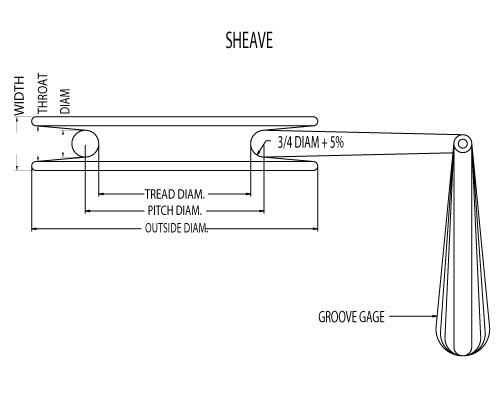Putting It Together
Assembly Tolerances
Overall length tolerances required for cable assemblies and cut lengths of cable often dictate the production method to be used and thus the cost. Close tolerances frequently result in higher costs for both production and quality assurance. The allowable tolerance and inspection methods should be reviewed and agreed upon with Bergen prior to production. When specifying assembly length, best practice will be to use distance between designated measuring points as shown in the different sections. Measuring points are normally located at the load bearing points of fittings.
Conduit Length Tolerances
Overall conduit length tolerances are listed below. The acceptable tolerance and inspection method should be reviewed with Bergen prior to production.Breaking Strength Safety Factor
In determining the working load of a cable or wire rope, the direct stress plus the shock in bending loads must be considered. To assure long life, a reasonable safety factor should be applied to the working load. Standard industry practice is a 5:1 safety factor for many applications. Higher safety factors are used under certain conditions such as extreme shock loads, aircraft control cables, etc.
Cable Diameter As Related To Pulley Or Sheave Diameter
 The fatigue life of the cable or wire rope will be greatly enhanced with properly designed pulleys. The root, or pulley tread diameter, is critical to the life of the cable. The following chart should be used to determine the minimum rations for tread diameter (D), to cable diameter (d). These ratios are only meant as a guide – your intended use should determine your final design.
The fatigue life of the cable or wire rope will be greatly enhanced with properly designed pulleys. The root, or pulley tread diameter, is critical to the life of the cable. The following chart should be used to determine the minimum rations for tread diameter (D), to cable diameter (d). These ratios are only meant as a guide – your intended use should determine your final design.